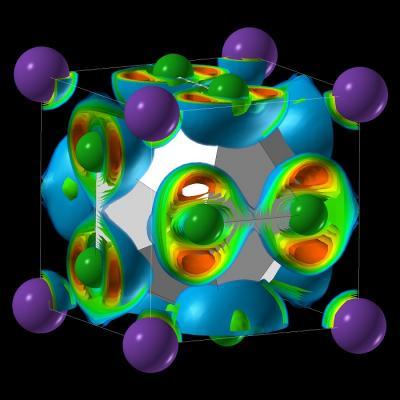Washington, D.C.—Table salt, sodium chloride, is one of the first chemical compounds that schoolchildren learn. New research from a team including Carnegie's Alexander Goncharov shows that under certain high-pressure conditions, plain old salt can take on some surprising forms that violate standard chemistry predictions and may hold the key to answering questions about planet formation. Their work is published December 20 in Science.
The team, which also included Carnegie's Elissaios Stavrou and Maddury Somayazulu, among others, combined new computational methods and structure-prediction algorithms with high-pressure experiments to study the range of changes that simple sodium chloride undergoes under pressure. They predict some unanticipated reaction results under high pressure that could help geochemists scientists reconcile ongoing mysteries involving minerals found in planetary cores.
The team first used advanced algorithms to identify an array of possible stable structural outcomes from compressing rock salt. They then attempted to verify these predictions, using a diamond anvil to put salt mixed with molecular chlorine or metallic sodium under high pressured.
"We discovered that the standard chemistry textbook rules broke down," Goncharov said.

This is the structure of NaCl3, courtesy of Artem Oganov.
(Photo Credit: Artem Oganov)
The well-understood rock salt, NaCl, turned into stable compounds of Na3Cl, Na2Cl, Na3Cl2 and NaCl7, all of which have highly unusual chemical bonding and electronic properties.
"If this simple system is capable of turning into such a diverse array of compounds under high-pressure conditions, then others likely are, too," Goncharov added. "This could help answer outstanding questions about early planet cores, as well as to create new materials with practical uses."
The research team also included lead author Weiwei Zhang of China Agricultural University; Artem Oganov, Qiang Zhu, Eddine Boulfelfel, and Andriy Lyakhov of State University of New York Stony Brook; Vitali Prakapenka of the University of Chicago; and Zuzana Konopkova of Photon Science DESY.
Source: Carnegie Institution